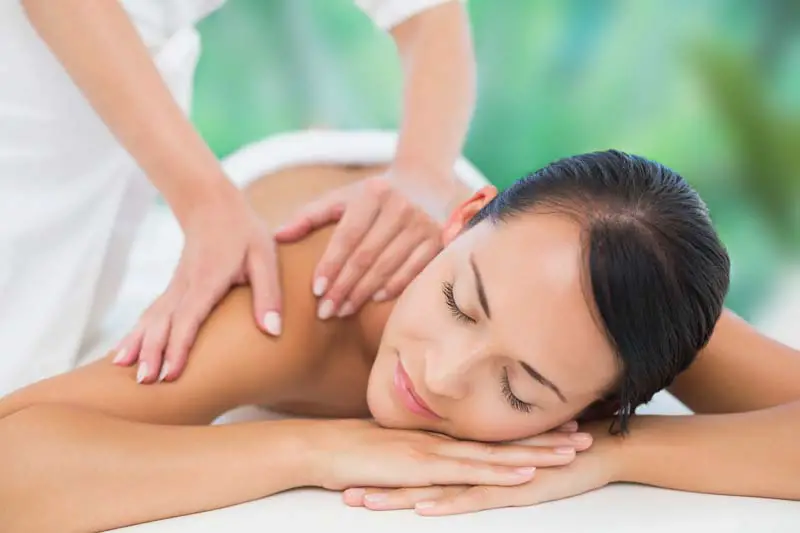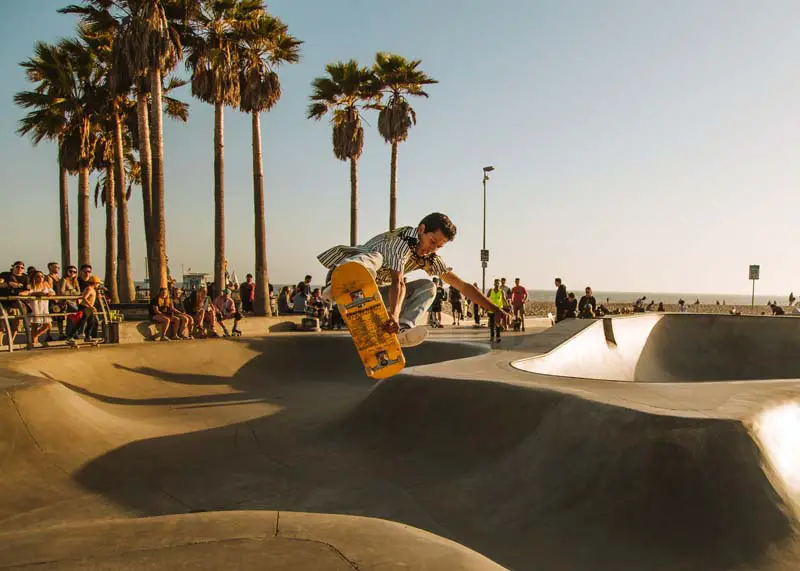Bunions are neither pleasant to look at, nor comfortable. In fact, paired up with some tight-fitting shoes, they can be quite painful. Perhaps you have read somewhere that massaging your bunions may help relieve some of that pain. And you are right. Massage does help; you just need to know how to do it. If you are wondering how to massage a bunion, this is the article for you!
What Causes A Bunion?
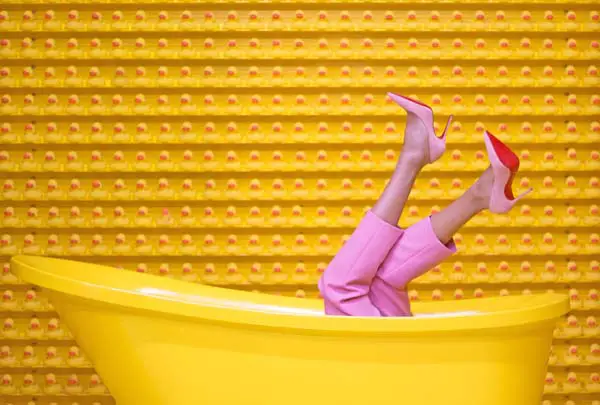 Bunions are also known under the name of Hallux Vagus. It refers to the bone bump that develops on the big toe joint. What happens is the bones of the front part of the foot move out of their anatomical position. And so, the tip of the big toe moves towards the second toe. This forces the joint at its base to move to the inside of the foot so that it characteristically sticks out.
Bunions are also known under the name of Hallux Vagus. It refers to the bone bump that develops on the big toe joint. What happens is the bones of the front part of the foot move out of their anatomical position. And so, the tip of the big toe moves towards the second toe. This forces the joint at its base to move to the inside of the foot so that it characteristically sticks out.
The skin over the bunion often appears red and sore. The bunion itself is often painful. It is not uncommon for similar bunions to form on the joint of the small toe as well. But what causes the formation of bunions?
Bunions can be seen in both men and women. However, they are a lot more common among women. In fact, women are ten times more affected by bunions as compared to men. Do you wonder why that is?
Women like to wear tight-fitting, high-heel shoes. Wearing such shoes is among the most significant causes of bunions. Once the bunion fully forms, wearing tight shoes will only contribute to the occurrence of swelling and pain in the area. But the truth is that doctors still do not know what exactly is causing bunions.
Tight-fitting shoes are only one of the common factors. But there are many more to be considered. Trauma, rheumatoid arthritis, polio, and gout can also cause a bunion to develop. Then some are genetically predisposed to develop bunions. If one’s parents struggle with bunions, the chances are that the individual has inherited the similar anatomical shape and structure of the feet that has led to bunions.
Relieving Bunion Pain Through Massage
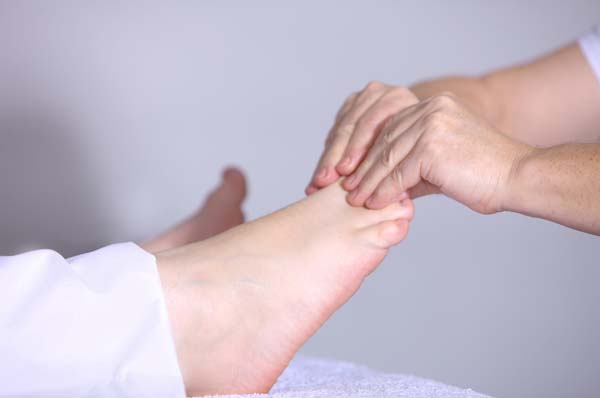 The majority of bunions are treated without surgery. It is important to mention that no non-surgical treatment will ever be able to reverse your bunion. However, it can help relieve many of the symptoms. Inflammation, pain, and stiffness can all be reduced with the use of non-surgical treatments. Surgical treatment, on the other hand, is usually recommended for more severe deformities.
The majority of bunions are treated without surgery. It is important to mention that no non-surgical treatment will ever be able to reverse your bunion. However, it can help relieve many of the symptoms. Inflammation, pain, and stiffness can all be reduced with the use of non-surgical treatments. Surgical treatment, on the other hand, is usually recommended for more severe deformities.
Changing your usual footwear is a must, especially for women. Often doctors prescribe orthotics to take some of the pressure off the bunion. Moderate pain and swelling are usually controlled with over-the-counter medications, such as ibuprofen.
What we want to talk about is the use of massage. Massage is not only useful when we are feeling stressed. Other than relaxation, massage also promotes healing of the body as well. Things are not so different when we are talking about its benefits for your toes and feet.
Through massage, one can improve the blood flow in the feet. It can also reduce the present stiffness and enhance the range of motion in the affected joints. But most importantly, it can help relieve some of that pain. So let’s see how to massage a bunion!
-
Ice massage
Whenever you need quick pain relief, we recommend applying ice therapy. Do not worry – You do not need any fancy equipment; a simple ice cube will do the trick. Use a towel to smoothly glide the ice cube in circular motions. Remember to apply mild pressure when you massage the area around your bunion. Continue rubbing until the area is numb but do not do it longer than 5-10 minutes.
-
Toe traction
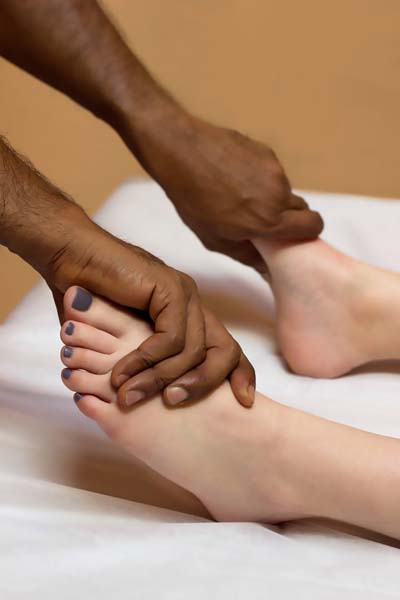
You will feel like the space in its joint increases, and the pain reduces. This will be a neutral position. Now gently slide the toe up and then back into a neutral position. Next, repeat the same thing, sliding the toe down. From a neutral position, slide the toe left and then right. Now release. This is known as toe traction. When done daily, it can help your toe to become more flexible. In return, this will take away some of the pain and stiffness.
-
Massage your foot by using your fingers or a foot massage ball
While still sitting in the same position, use your fingers to apply a few massage techniques. Start by using both your thumbs to apply pressure beneath the mounds of your toes. From the base of the big toe, apply pressure down and up following the inner arch of the foot. Repeat the movements following the outer arch of the foot as well. You can use the same massage technique by rolling a foot massage ball on the floor.
To increase toe mobility, you can also use the so-called “yoga handshake.” To do this, place your fingers between your toes, gripping the sole of the foot. Now work the toes back and forth using the “yoga handshake.” This will help loosen them up.
-
Use a foot massager
Using a foot massager can create a spa-like experience in your home. It will relieve the pain and inflammation while also improving the blood flow and inducing relaxation. This is an excellent option for anyone who is not flexible enough to reach their toes and feet. Choose a high-quality foot massager such as the RENPHO foot massager, the Miko Shiatsu foot massager, or the Snailax 2-in-1 Shiatsu foot and back massager, all currently available on Amazon. A foot massager is also a great gift for any loved one who is struggling with bunions.
Conclusion
Grab some essential oils, some ice cubes, and maybe even a foot massager to create a relaxing spa evening at home. While you will essentially feel more relaxed, the goal is to relieve some of the pain that your bunion has been causing. Through massage, it is possible to improve the majority of the symptoms and make walking bearable again. You just need to know how to massage a bunion. And hopefully, we answered all of your questions related to this topic.
Related Reading
- Can Massage Cause Diarrhea? What Other Massage After Effects You Need To Know
- What to Do After a Massage? 6 Ideas to Supercharge Your Session
- Infinity Evolution Massage Chair Review. I Am Convinced That It Is The Best Massage Chair
Photo by kelly samuel from Pexels

Try our Anti-Aging Gua Sha Tool designed to bring out your skin’s natural glow.
Best Gua Sha Product- Anti-Aging: The tool is designed to target 11 specific aging signs such as wrinkles and sagging skin. By following the 7-step routine, users can improve skin firmness and reduce fine lines naturally.
- Enhances Skincare Routine: It works effectively with serums and lotions, boosting absorption and efficacy of skincare products.
- Visible Skin Improvement: Users can expect a smoother complexion, reduced puffiness, and a more youthful appearance.
 P. Sze
P. Sze 
















